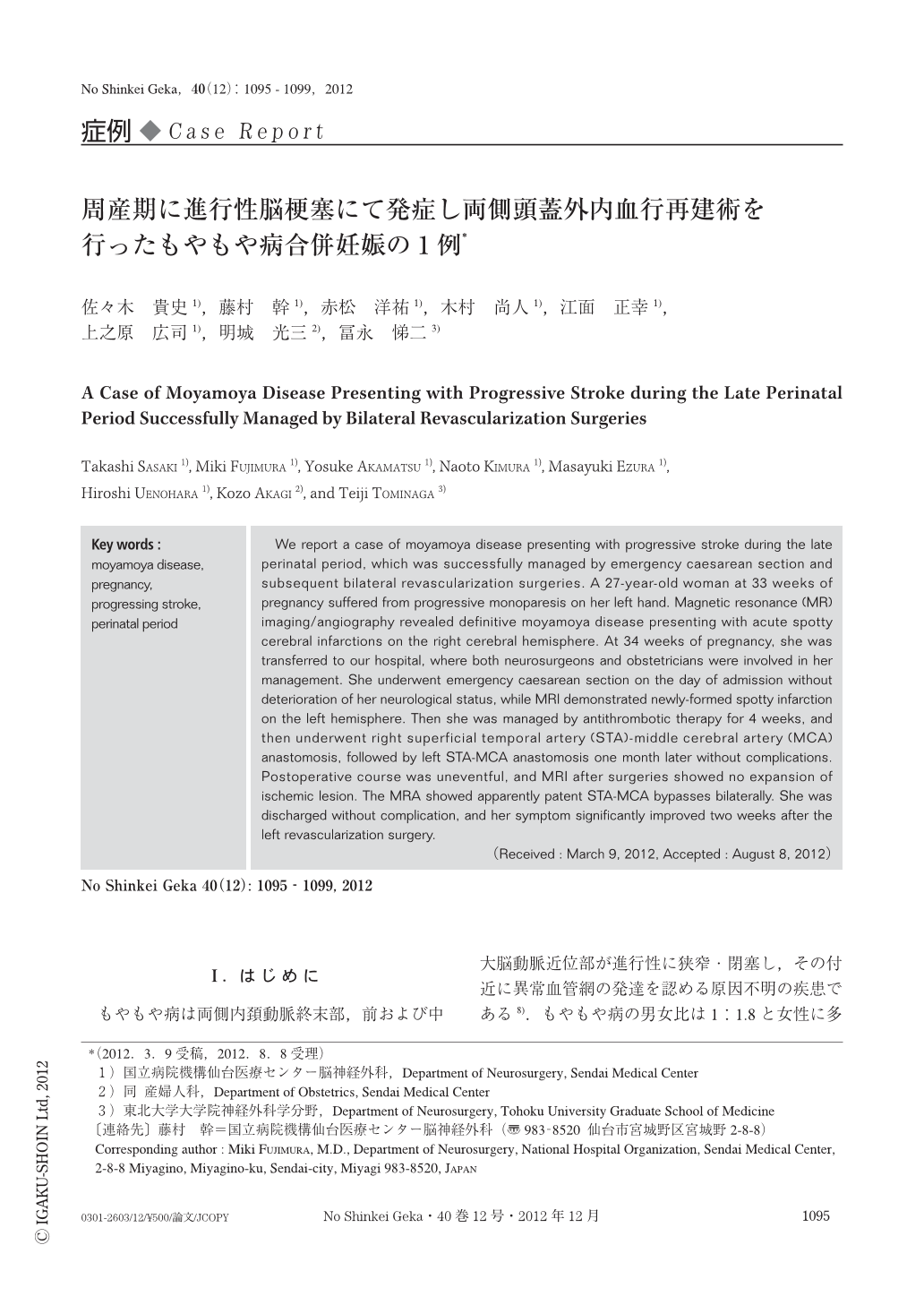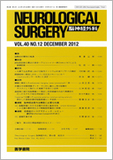Japanese
English
- 有料閲覧
- Abstract 文献概要
- 1ページ目 Look Inside
- 参考文献 Reference
Ⅰ.はじめに
もやもや病は両側内頚動脈終末部,前および中大脳動脈近位部が進行性に狭窄・閉塞し,その付近に異常血管網の発達を認める原因不明の疾患である8).もやもや病の男女比は1:1.8と女性に多く,その発症年齢は10歳以下を中心とする若年型と30~40歳を中心とする成人型の二峰性を示す7,8).近年のmagnetic resonance imaging(MRI)/ magnetic resonance angiography(MRA)などの非侵襲的な診断技術の向上により7),もやもや病との診断がなされた患者が妊娠・出産を経験する機会も稀ではなくなってきている.
脳虚血症状を有するもやもや病に対しては,直接および間接血行再建術が有効な治療法として確立している3,8).しかしながら,妊娠中に虚血症状を呈して初発するもやもや病合併妊娠例に対しては,治療のタイミングを含めた手術適応,ならびに周産期の管理方法についての明確な指針が存在しないのが実情である5,6,9).今回われわれは,妊娠後期に進行性脳梗塞にて初発し,緊急帝王切開術後に二期的に両側頭蓋外内血行再建術を施行し,良好な結果を得たもやもや病合併妊娠の1例を経験したので報告する.
We report a case of moyamoya disease presenting with progressive stroke during the late perinatal period, which was successfully managed by emergency caesarean section and subsequent bilateral revascularization surgeries. A 27-year-old woman at 33 weeks of pregnancy suffered from progressive monoparesis on her left hand. Magnetic resonance (MR) imaging/angiography revealed definitive moyamoya disease presenting with acute spotty cerebral infarctions on the right cerebral hemisphere. At 34 weeks of pregnancy, she was transferred to our hospital, where both neurosurgeons and obstetricians were involved in her management. She underwent emergency caesarean section on the day of admission without deterioration of her neurological status, while MRI demonstrated newly-formed spotty infarction on the left hemisphere. Then she was managed by antithrombotic therapy for 4 weeks, and then underwent right superficial temporal artery (STA)-middle cerebral artery (MCA) anastomosis, followed by left STA-MCA anastomosis one month later without complications. Postoperative course was uneventful, and MRI after surgeries showed no expansion of ischemic lesion. The MRA showed apparently patent STA-MCA bypasses bilaterally. She was discharged without complication, and her symptom significantly improved two weeks after the left revascularization surgery.

Copyright © 2012, Igaku-Shoin Ltd. All rights reserved.


